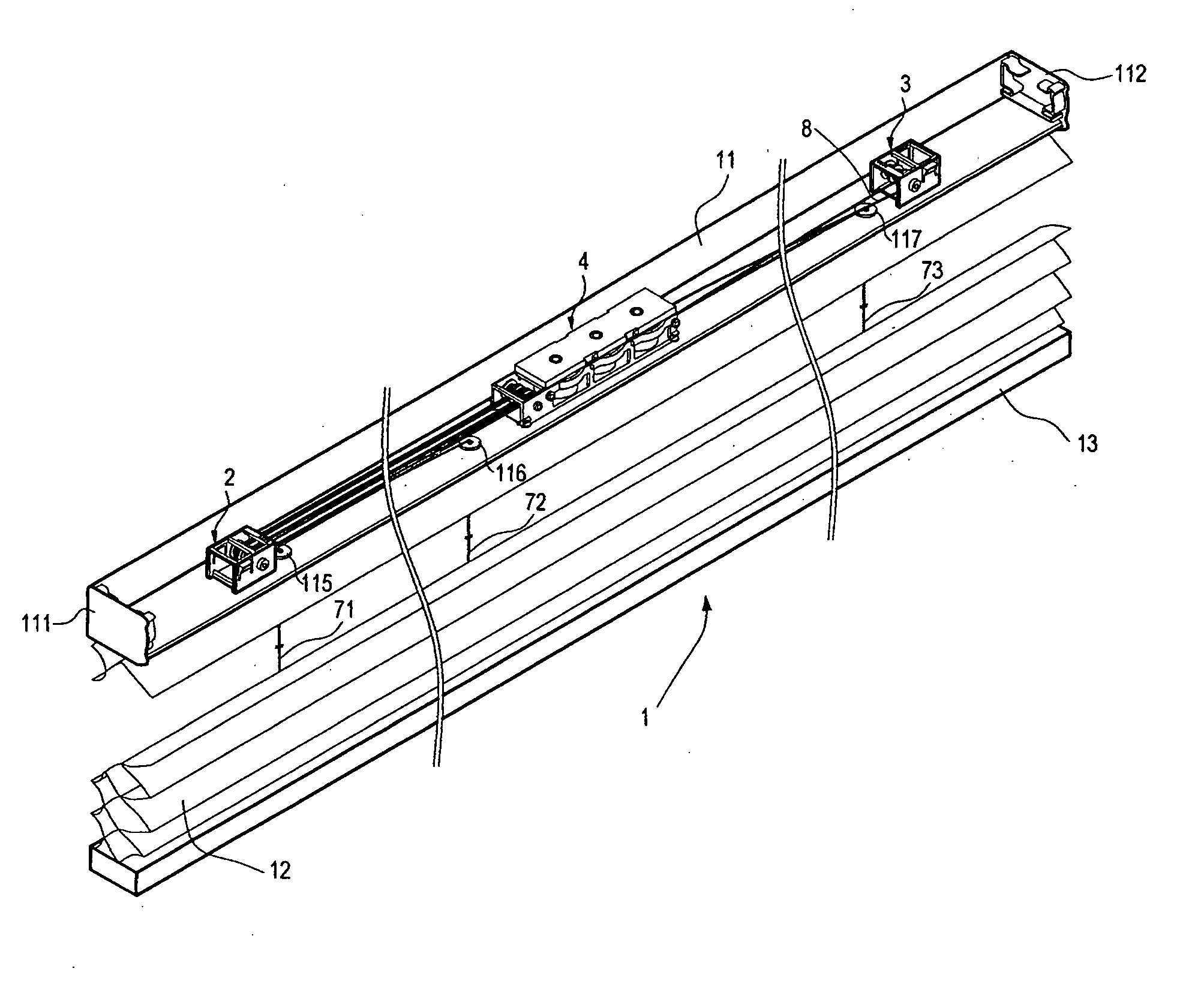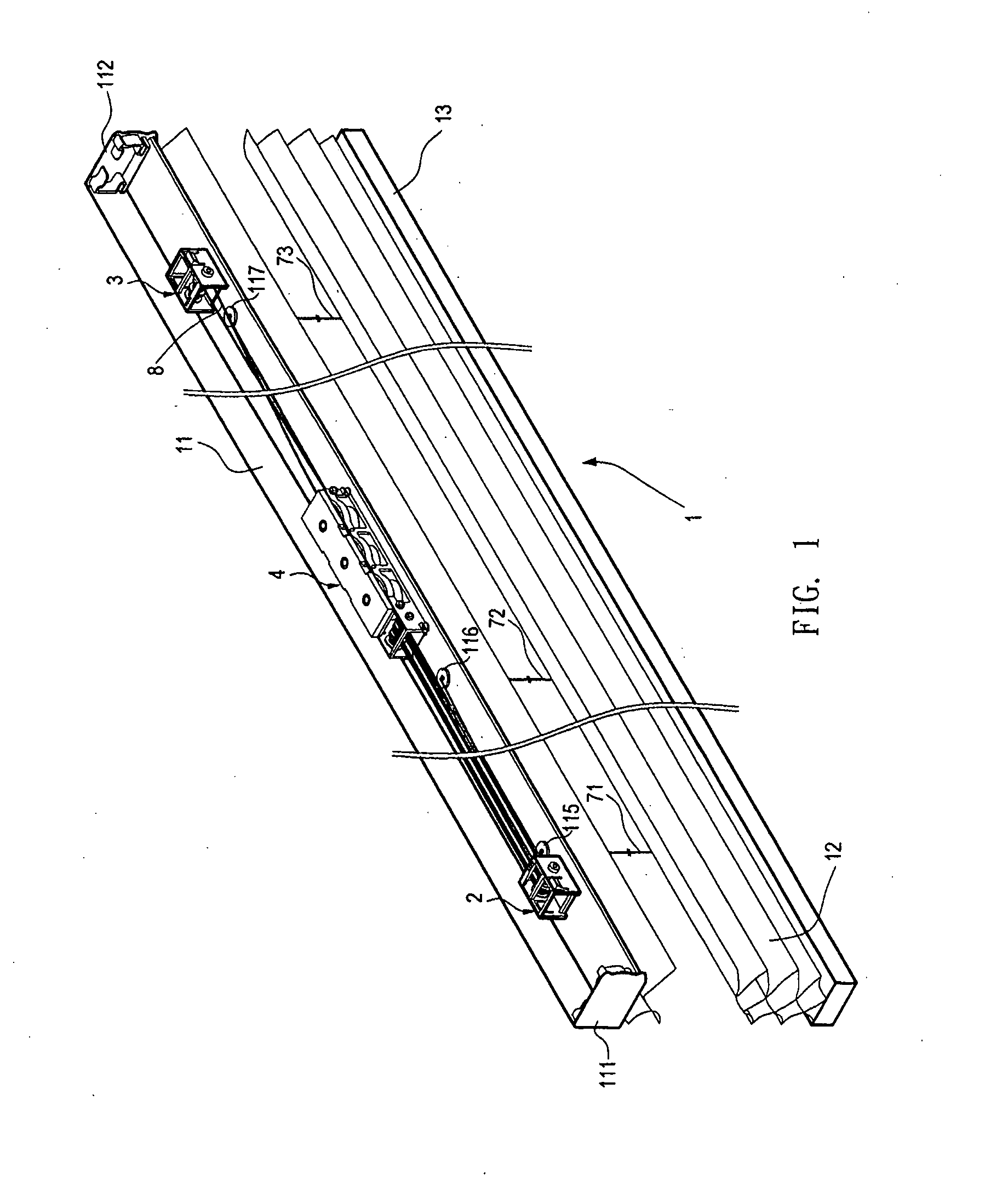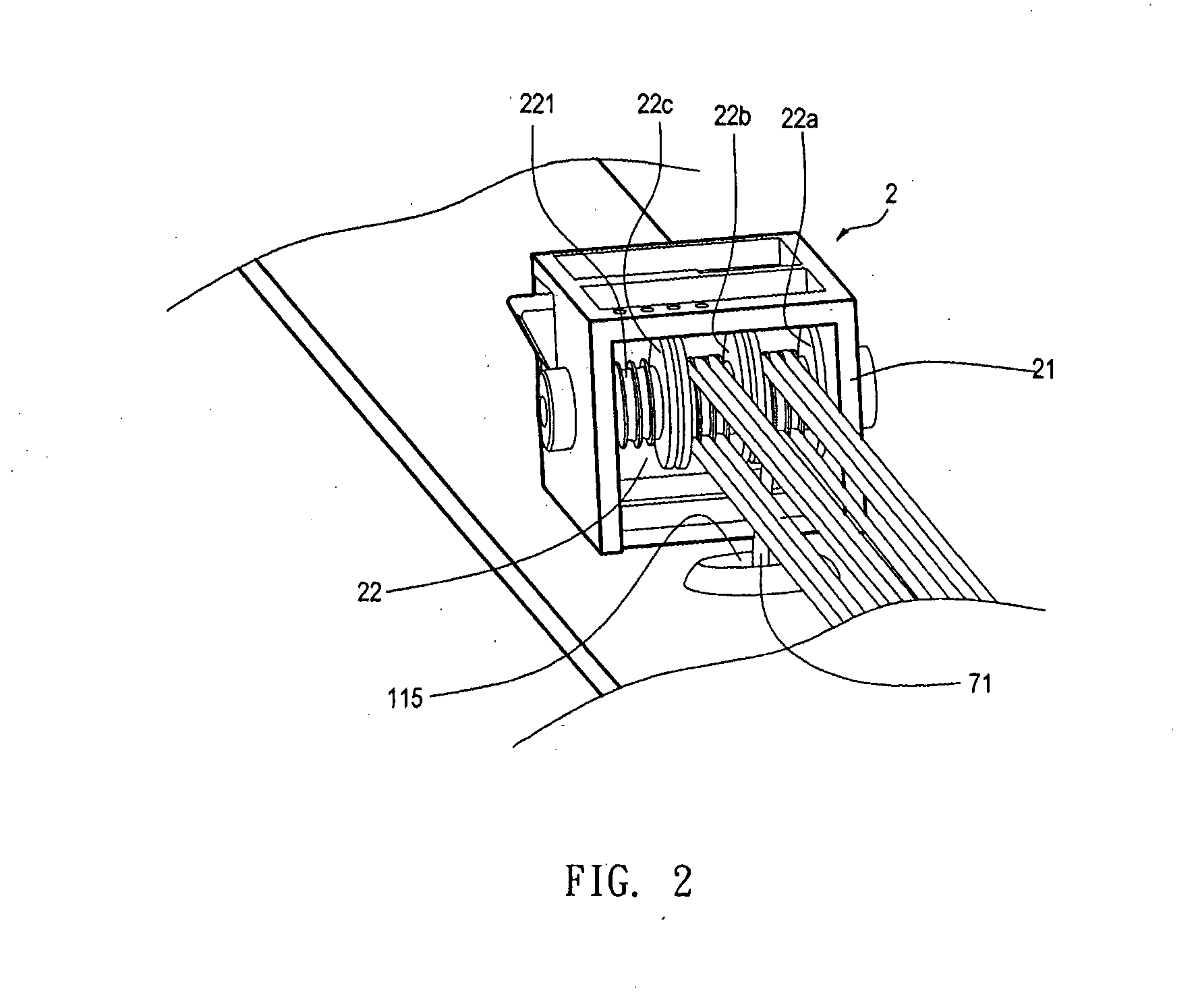Cordless window blind structure
a window blind and cordless technology, applied in the direction of door/window protective devices, construction, building components, etc., can solve the problems of inconvenient operation, blind body cannot be accurately positioned, hands touching the area, etc., and achieve the effect of reducing the requirement of cutting down
- Summary
- Abstract
- Description
- Claims
- Application Information
AI Technical Summary
Benefits of technology
Problems solved by technology
Method used
Image
Examples
Embodiment Construction
[0030]Preferred embodiments of the present invention are described in detail below with reference to the accompanying drawings.
[0031]Referring to FIGS. 1 and 2, they are perspective views of a preferred embodiment of the present invention. A cordless window blind structure 1 includes a head rail 11, a first positioning element 2, a second positioning element 3, a movable seat 4, a blind body 12, a bottom rail 13, three lift cords 71, 72, and 73, and a retrieving cord 8.
[0032]The top end of the head rail 11 has an opening structure and has a predetermined length. The left and right ends of the head rail are respectively formed into a first end and a second end, and end caps 111 and 112 may be respectively disposed on the first and second ends of the head rail 11. The head rail 11 has three through holes 115, 116, and 117 disposed at a bottom portion thereof and they are correspondingly provided for the lift cords 71, 72, and 73 to pass through. The first positioning element 2 is fixe...
PUM
 Login to View More
Login to View More Abstract
Description
Claims
Application Information
 Login to View More
Login to View More - R&D
- Intellectual Property
- Life Sciences
- Materials
- Tech Scout
- Unparalleled Data Quality
- Higher Quality Content
- 60% Fewer Hallucinations
Browse by: Latest US Patents, China's latest patents, Technical Efficacy Thesaurus, Application Domain, Technology Topic, Popular Technical Reports.
© 2025 PatSnap. All rights reserved.Legal|Privacy policy|Modern Slavery Act Transparency Statement|Sitemap|About US| Contact US: help@patsnap.com



